Cities abound with difference: people, buildings, trees, plants, animals, etc. People in cities (and beyond, of course) inhabit various and fragmented identities that include gender, class, race, ethnicity, sexuality, age, and ability/disability. These identities are produced in relation with other people, living- and non-living entities, and the landscape. These social identities are shaped through, and reflect differential access to, experiences of, and control over nature, both rural and urban.
In this, the first part of a two-part series I discuss why paying attention to gender is necessary for making cities more sustainable and just. An individual’s gender—woman, man, transgender, or other gendered—determines their spatial freedom, behaviour, and -experiences in cities. There are spaces in cities women feel unsafe, but men do not. For many women and transgendered individuals, large forested parks are not always the therapeutic, serene green spaces they were planned as; indeed, they can often be spaces of fear and anxiety. There are also spaces that women occupy and use more than men, thus developing different knowledges about the city. Because of the differential experience and knowledge of cities, we need to recongise that the spatial organisation of cities is never neutral. As such, any work towards creating more sustainable cities needs to pay attention to difference in cities.
As Elizabeth Grosz so eloquently summarizes:
“The city provides the order and organization that automatically links otherwise unrelated bodies […] The city orients and organizes family, sexual and social relations insofar as the city divides cultural life into public and private domains, geographically dividing and defining the particular social positions and locations occupied by individuals and groups.” (1992, p. 250)
Gender, class, and race are the three main categories that underlie social and spatial difference. The second part of the series will focus on the importance of paying attention to race as it relates to nature in cities.
Gender roles and relations as markers of human difference grounded in biology continue to be commonplace ways of conceptualizing relations within and across societies. As such, gender is a significant factor in understanding a diversity of human-environment relations as well as environmental management, polices, and practices.
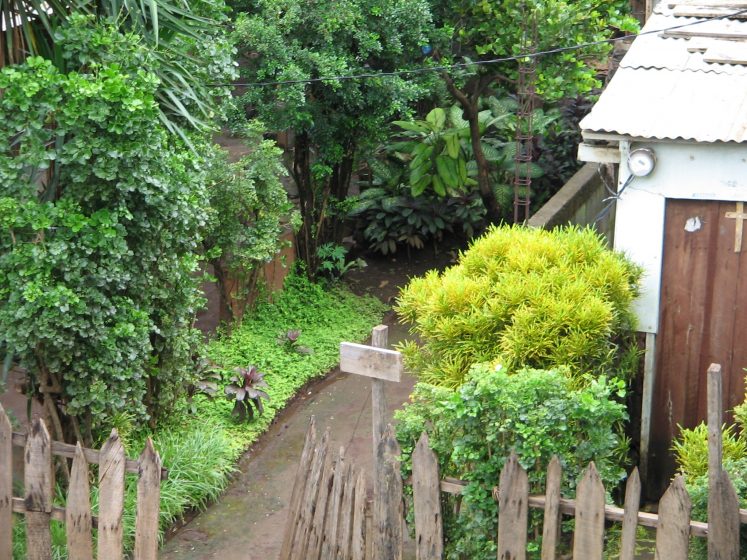
Gender intersects with race and class in complex ways (Mollett & Faria, 2013). While I concentrate on gender in this article, it is important to stress that gender is never universal. Gender is contextual and always needs to be considered in relation to race, class and place (geography). A white woman living in New York City has different knowledge of, experience with, and access to “nature” than a black woman in Lagos, Nigeria, or an Inuit woman in Kuujjuaq, Nunavik. We can also look at the differences in a specific place: for example, a white woman in Los Angeles may have different knowledges and experiences than a Latina woman in Los Angeles. Such differences may be racial, they may be class related, or both. The differences can also be a function of location—living close to an urban park or beach (easy access) or having to rely on public transport to access urban nature. Alongside the differences among and between women mentioned above, there are also differences between genders, and how gender roles shape and influence one’s perception of and interaction with their environment.
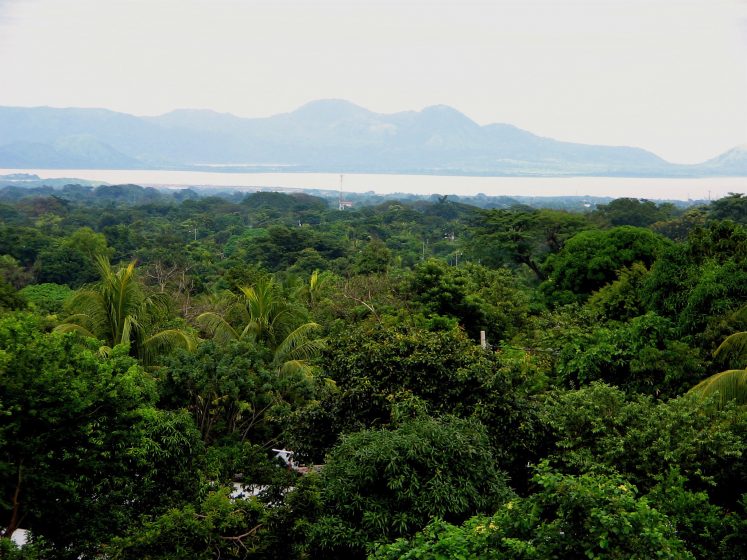
What is gender? Gender, as I use it in this article, refers to the categories of male and female that do not necessarily have to relate directly to biological sex. In other words, the socially constructed ways in which we categorise masculine and feminine—those cultural characteristics that define masculinity and femininity. Moreover, the categories of male and female are diverse and dynamic. What counts as feminine may differ between cultures. Nonetheless, male and female (and masculinity and femininity) have defined social roles and relations in everyday life in most cultures and places in the world.
For example, in North American society, women are still the primary caretakers of children and responsible for domestic tasks. There are, of course, strong challenges to this assumption and gender roles have undergone changes, but a division of labour remains based on traditional (Western) gender roles: men as paid workers (productive labour) and women as caregivers (reproductive labour). This division is reflected in the recent Canadian census. In Canada women are still less likely to be employed than men: 77.5 percent of women were employed in 2015 compared with 85.3 percent of men (Moyser, 2017). Moreover, women are also more likely than men to work part-time (18.9 percent versus 5.5 percent), and to do so for voluntary reasons (67.2 percent versus 53.0 percent), typically to care for children. This meant that women spent an average of 5.6 fewer hours per week on paid work than men (35.5 hours versus 41.1 hours) (Moyser, 2017). While involvement in the labour force is now commonplace for Canadian women, over half (56.1 percent) are employed in traditionally-female occupations: teaching, nursing and related health occupations, social work, clerical or other administrative positions, or sales and services (this is compared with 17.1 percent of men and has changed little since 1987) (Moyser, 2017).
In the domestic sphere, gender roles have also changed, but just like in paid labour (working sphere), traditional gender roles remain. Women continue to do the most household work: in 2015, 93 percent of mothers reported participating in different types of household work and accounted for 61 percent of the total number of hours of household work (an average of 3 hours per day) (Houle, Turcotte & Wendt, 2017). However, men are doing more domestic tasks—in 2015 the proportion of men in families doing household work rose from 51 percent in 1986 to 76 percent in 2015 (mainly preparation of meals) (Houle, Turcotte & Wendt, 2017).
While there have been some changes in the Canadian context, overall there remains a traditional gendered division of labour. One of the key reasons for this—despite the desire to change for many individuals—is the lack of transformation within the workplace to support change, for example, affordable daycare and legislated paternity leave. (see Bloomberg and the Globe and Mail). But what does the gendered division of labour have to do with nature? I propose, that at a fundamental level, what individuals do in their everyday life and their role in broader society shapes how they understand, experience, and know their environment and nature.
There are three key ways that gender shapes relations with nature and the environment: Knowledge, Rights and Responsibilities, and Environmental Interests. I take these from the early work of Diane Rocheleau, Barbara Thomas-Slayter and Esther Wangari (1996) in feminist political ecology. My aim here is to offer a starting point to those who have not had the opportunity to think about gender, nature and cities before. I draw on my research in Managua, Nicaragua to illustrate the ways in which gender shapes relations with nature.
Knowledge
Rocheleau, Thomas-Slayter and Wangari (1996) emphasise that a person’s knowledge of nature and the environment comes from their material, everyday interactions with a specific environment (both built and nature, a combination of). How they interact with their everyday environment is shaped by the role that person plays in the household, in the community, and in broader society. If it is expected that women are responsible for domestic work and space, then their experiences with and knowledge of nature will derive out of their everyday tasks and the spaces they move through and in while doing those tasks.
For example, if women are primarily responsible for the domestic sphere—the home, childcare, eldercare, and other tasks that make up reproductive labour—they will develop intimate knowledge of the surrounding nature and the natural environments close to the home. Such natural elements could include water delivery and quality in the home and green spaces (private yard, community parks, schools, sidewalks, etc.). Such spaces and natural elements comprise their everyday patterns; going to the park everyday with children, walking children to school, carrying out domestic tasks in the yard and home.
In contrast, if men work outside the home most of the day, their knowledge of the environment and nature will be different. Their knowledge of the environments listed above will be less intimate because the interaction is not quotidian. They may learn very little about the nature of the schoolyard and only experience community parks on weekends. Conversely, weekends may involve leaving cities and going out to rural environments and nature, thus reducing their intimate knowledge of commonplace nature in cities.
A gender-based difference with regard to knowledge of nature in everyday spaces can been seen in a collaborative research project I was part of in Managua, Nicaragua in 2006. We had household members in an informal settlement map their home patios to identify the diversity of species (participatory ecological inventory). The majority of women involved in the project worked at home and the men worked away from home (e.g. as taxi drivers, casual labourers, gardeners, agricultural labourers in rural areas). On average, women identified 22 different species in their patios while men averaged thirteen. This difference was a result of the large number of ornamental plants that women mapped: in their patios ornamentals comprised 54 percent of the different species. Men tended to map trees, and the species-diversity they mapped comprised 40 percent fruit- and 18 percent non-fruit trees. By comparison, species diversity in women’s maps consisted of 22 percent fruit trees and only 8 percent non-fruit trees. Overall, women identified 123 out of the 130 species identified (95 percent of the total species-diversity of the patios).
If we had carried out the mapping in upper class households in Managua, the results would have been different. Knowledge of nature and environment will differ also depending on social class and race. A wealthy woman will—as mentioned in the introduction—have a radically different everyday interaction than a lower-income woman.
In other words, women and men develop different environmental knowledge based on their experiences and because of their labour and social positions.
Gendered access to resources resource and environmental services
Access to resources and to environmental quality, also varies according to a person’s identity. Gender plays an important role in many places around the world in defining a person’s access to and control over different natural resources and environmental services, access to clean water or sanitation for example. In many places, the responsibility for securing water for drinking, cooking and bathing falls to women. In many cities (as well as rural areas), women gather water at collective sources (such as wells, taps, and rivers). Travelling to and from the collective water source can be risky—exposing women to theft, to assault, and sometimes rape. The same is true for women who live in without household sanitation. They are required to use public toilets and bathing areas, increasing the risk of assault and rape (see for example Travers, Khosla & Dhar, 2011). Thus, lack of access to certain environmental services raises many security issues for women throughout the world. Environmental quality rights intersect with issues of gender inequality and environmental justice.
We can also think of gendered rights and responsibilities in terms of natural resources, as Rocheleau et al (1996) discuss at length in their book. Land tenure is the classic example, but there are also finer nuances of resource tenure. For example, there are specific gender-defined rights to different parts of a tree (fruit versus timber). The above example of mapping patios in Managua reflects the difference in gender-defined rights. The men in the mapping project identified primarily large trees. Women identified almost all the species. Why? Because men in the household were responsible for maintaining the health of larger trees—trimming the branches, gathering fruit from upper branches. Women were responsible for all other plants in the patio—they use the leaves, seeds, and fruit for food and medicine. Moreover, their everyday tasks take place in the patio and not inside the house in Managua, so they are surrounded by the plants and trees all day. The ecology, that is the nature of their patio, is important in their daily routines.
Women considered ornamental plants and fruit trees to be the most important plants in the patios, both in number and species diversity. Their benefits to the household were numerous. Ornamental plants create an aesthetically pleasing space, and a more homey and comfortable environment. They also are easy to grow and propagate rapidly, and are the only plants that flourish under the shaded canopy of fruit trees that dominate patios. The fruit trees—in addition to providing fruit—create privacy in and shade for the patios. Shade is critical in Managua, where daytime temperatures average 32°C year-round. Thus, large fruit trees such as mangoes and avocados protect the houses and patios from harsh sun and heat, keeping them cool. The shade allows women to carry out their household tasks in relative comfort. Indeed, the combination of fruit trees in all the patios creates a micro-climate in the neighbourhood, with a lower temperature compared to other parts of the city.
The importance of the patio ecologies in the everyday lives of women influences them to fight to maintain their patios when confronted with external pressures to alter the local environment.
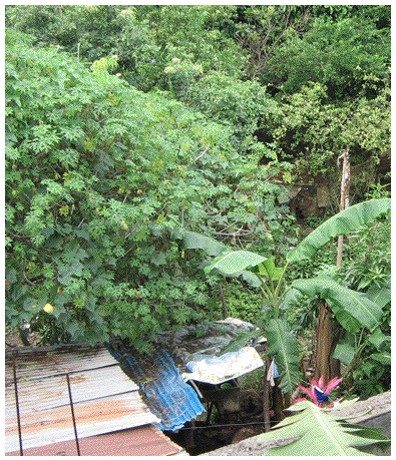
Gendered interests in environmental politics and grassroots activism
Gender differences in knowledge, rights, and responsibility translate into differences in environmental interests or stakes with regard to environmental change. In the mid-1999s then Rocheleau, Thomas-Slayter and Wangari wrote Feminist Political Ecology,they pointed out that women made up a minority in many of the traditional environmental conservation groups in the developed world , but that they were often in the majority in environmental grassroots movements. Women are now more present in conservation and environmental groups as well as remaining the majority in grassroots movements. Rocheleau, Thomas-Slayter and Wangari (1996) argued that women and men also differ in the types of environmental issues with which they engage politically, as well as in the manner in which they carry out their political and activist interests. For example, women deploy their position as mothers or their place of labour—the home—in their engagement with grassroots environmental movements.
In the example of the patios in Managua, environmental change (in the patios) has come primarily by efforts to establish household scale urban agriculture. Many urban agricultural projects in Managua have encouraged the conversion of the more ornamental patio ecologies described above into so called ‘productive’ ecologies. Fruit trees, for example, have been viewed solely for their role in producing fruit in urban agricultural projects. Indeed, many projects saw the fruit trees as hindering the ability to grow vegetables and recommended that households reduce the number of fruit trees in their patios. However, this view ignores that such trees have roles within the household. Cutting large shade-producing fruit trees to allow vegetables to grow brings about numerous changes in the everyday activities of the home: increased heat in the cooking areas, fewer private areas in the patio (e.g. for showering), increased water runoff during the rainy season, fewer shade-loving ornamental plants to cover the house and make it ‘homey’, and a change in the micro-climate of the barrio (increased temperatures). Most women in the neighbourhood refused to cut any trees and, even though they were interested in growing some vegetables, preferred to keep their patios as they were. However, men in many households were keen to grow vegetables and were willing to cut down trees. In the end, households agreed to create a pilot urban agricultural project in the community areas and school rather than alter the patios and women’s workspaces.
The households in Managua, Nicaragua reveal how gendered knowledge of nature is created through inhabiting the local environment and interacting with it on a daily basis. Moreover, the societal gendered power relations—the gendered division of labour—shape the dynamics of resource access and control.
Uncovering the gendered use, knowledge and spatial practices in private (as the example of Managua here) and public spaces in cities is helpful primarily because it makes visible what is usually invisible in cities. Urban planning historically and at present is still dominated by male planners. And as discussed above, an individual’s gender shapes how they understand, experience, and know spaces. Everyone’s knowledge is always partial and as such urban spatial organisation only reflects certain knowledges and experiences of space. The more diverse spatial knowledge we can uncover, the more inclusive cities can become. This also means that planning becomes more difficult and that we need more diversity in planning departments. Linked to this, recognising gender helps to reveal the unequal power relations within urban order and organization, including green spaces and other ecological organisation in cities. Just as urban spaces are never neutral, planned green spaces and environmental/ecological services are also not neutral.
By paying attention to gender differences in urban experience, we get closer to creating better cities. But emphasised above, we cannot look at gender on its own—we need to also pay attention to race and class. The second part in the series will tackle the question of race, nature, and the city.
Laura Shillington
Managua & Montreal
References
Grosz, E. (1992). Bodies-cities. In B. Colomina & J. Bloomer (Eds.), Sexuality & Space (pp. 241-254). New York, N.Y.: Princeton Architectural Press.
Mollett, S. & Faria, C. (2013). Messing with Gender in Feminist Political Ecology. Geoforum, 45: 116-125.
Moyser, M. (2017). Women and Paid Work, in Women in Canada: A Gender-based Statistical Report, Statistics Canada, Ottawa, Ontario. http://www.statcan.gc.ca/pub/89-503-x/2015001/article/14694-eng.htm
Rocheleau, D., Thomas-Slayter, B., & Wangari, E. (1996). Feminist political ecology: Global issues and local experience. New York: Routledge.

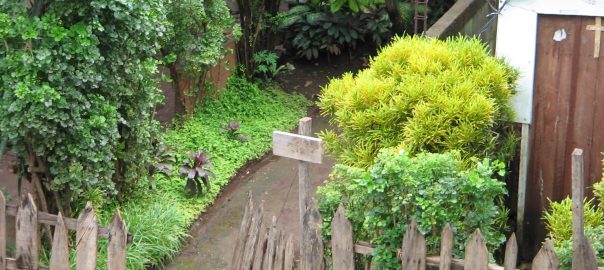






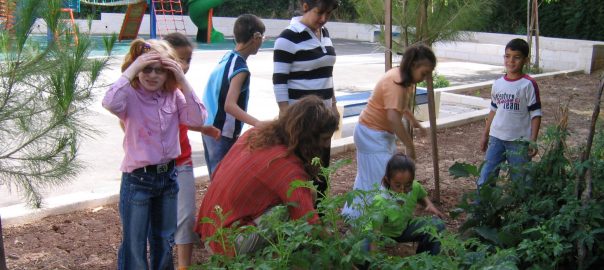
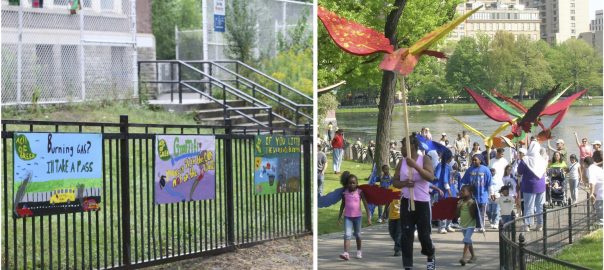

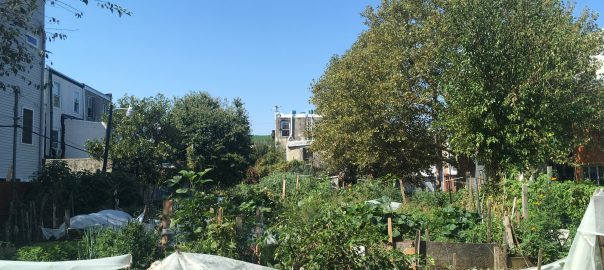
Add a Comment
Join our conversation